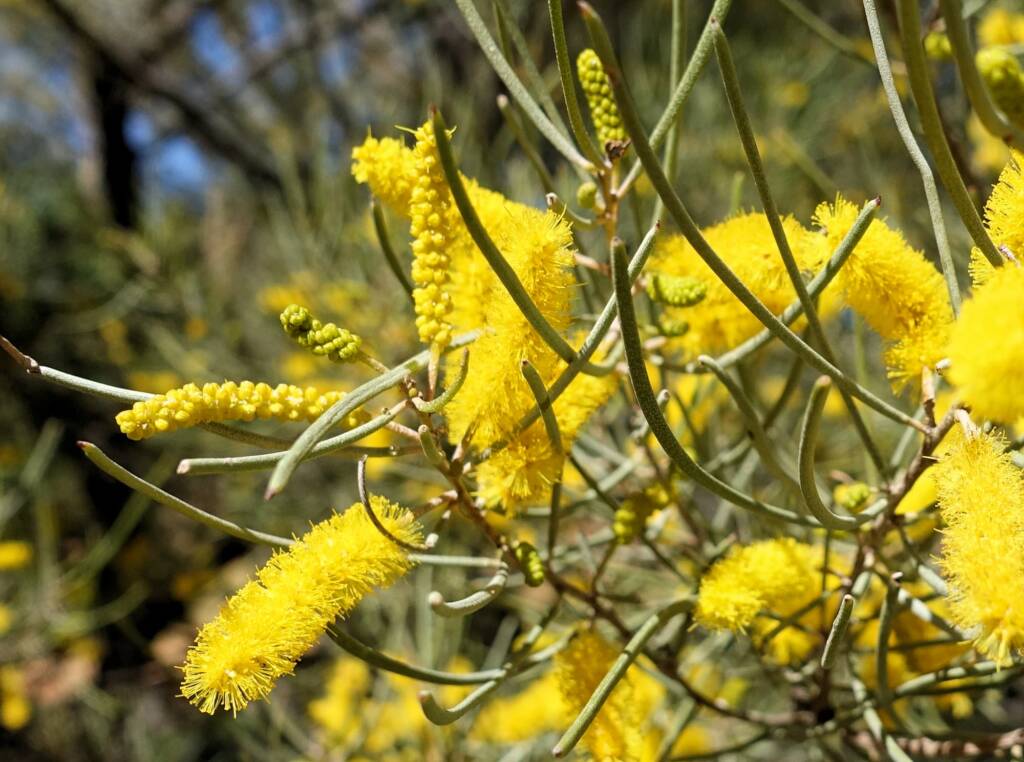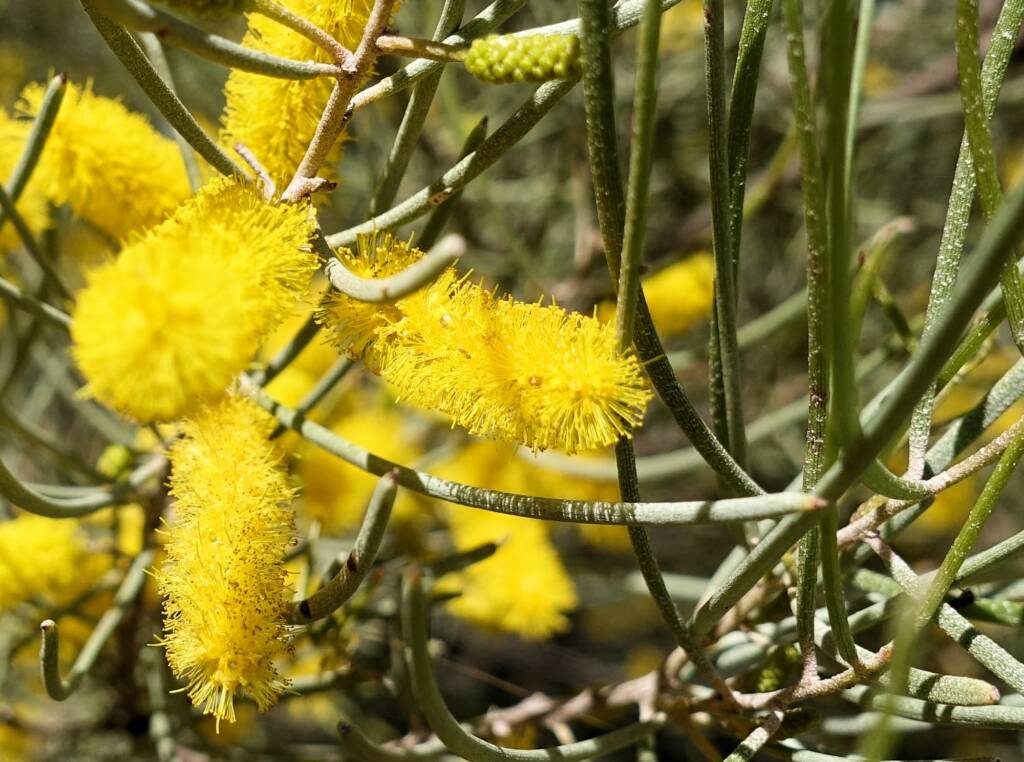Olive Pink Botanic Garden
OPBG FloraBean Tree Bush Hibiscus Bush Plum Caper Bush / Wild Passionfruit Dead Finish Ghost Gum Heart-leaved Frankenia Krichauff Ranges Fuchsia Mulga Needlewood Pink Fire-bush Potato Bush Prickly Wattle Red-Bud Mallee Shrubby Fox-tail (Ptilotus whitei) Sticky Hopbush (Dodonaea viscosa) Sturt’s Desert Rose Tall Saltbush Wild Tomato Wire-Leaf Mistletoe
The Mulga (Acacia aneura) is a long lived plant among acacias, that grows across a vast region of Australia, in particular much of arid outback of inland Australia. It is the dominant shrub and tree in the habitat often referred to as “mulga shrubland” and “mulga country”.

Mulgas are highly variable in form and height. In high rainfall areas, they can grow as a single-stemmed tree, whilst in dry regions they may only grow like a 2 to 3 metre high shrub. Under favourable conditions a young mulga plant can grow at a rate of 1 metre every 10 years, reaching a height of 10 metres or more. Whilst drought and reduced rainfall can slow this growth rate, a typical mulga can live for up to 200 to 300 years old.




The phyllodes (a leaf whose blade is much reduced or absent, and whose petiole and rachis have assumed the functions of the whole leaf), are needle-like and grow from 3 to 11 centimetres long. The phyllodes are cover with very fine hairs giving the foliage a silvery-grey appearance.




They have spikes of small bright-yellow flowers. They usually flower between March to October, although flowering can occur at any time of the year after enough rainfall. The seed pods are thin, flat and membranous-like, measuring 2 to 5 centimetres long and contain edible dark brown seeds.

- Scientific classification
- Kingdom: Plantae
- Clade: Tracheophytes
- Clade: Angiosperms
- Clade: Eudicots
- Clade: Rosids
- Order: Fabales
- Family: Fabaceae
- Clade: Mimosoideae
- Genus: Acacia
- Species: A. aneura
- Binomial name: Acacia aneura
Footnote & References
- Mulga, Acacia aneura, Horst Weber, Australian plants online, http://anpsa.org.au/APOL16/dec99-5.html
- The mighty mulga grows deep and lives long, author Gregory Moore, Doctor of Botany, The University of Melbourne, Beating around the bush, The Conversation, https://theconversation.com/the-mighty-mulga-grows-deep-and-lives-long-118838
OPBG FloraBean Tree Bush Hibiscus Bush Plum Caper Bush / Wild Passionfruit Dead Finish Ghost Gum Heart-leaved Frankenia Krichauff Ranges Fuchsia Mulga Needlewood Pink Fire-bush Potato Bush Prickly Wattle Red-Bud Mallee Shrubby Fox-tail (Ptilotus whitei) Sticky Hopbush (Dodonaea viscosa) Sturt’s Desert Rose Tall Saltbush Wild Tomato Wire-Leaf Mistletoe
